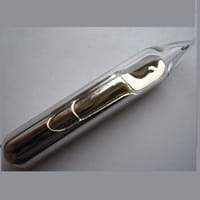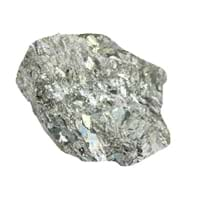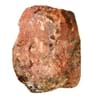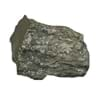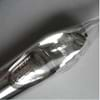Cesium vs Palladium
Periodic Table
Symbol
Cs
Pd
Group Number
1
17
10
8
Period Number
6
5
Block
s block
d block
Element Family
Alkali
Transition Metal
CAS Number
7440462
40
7440053
99+
Space Group Name
Im_ 3m
Fm_ 3m
Space Group Number
229.00
1
225.00
2
Facts
Interesting Facts
Not Available
- Palladium alloys are used for Jewelry contains (95% Palladium and 5% Ruthenium)
- In the late 1800s, Palladium metal used have more economical value than the Platinum metal.
- Palladium element is known as a good catalyst
Sources
Earth's crust, Found in Minerals, Mining, Ores of Minerals
Ores of metals
History
Who Discovered
Robert Bunsen and Gustav Kirchhoff
William Hyde Wollaston
Discovery
In 1860
In 1803
Abundance
Abundance In Universe
8 * 10-8 %
24
2 * 10-7 %
22
Abundance In Sun
~0.0000008 %
20
~0.0000003 %
24
Abundance In Meteorites
0.00 %
38
0.00 %
99+
Abundance In Earth's Crust
0.00 %
35
0.00 %
99+
Abundance In Oceans
0.00 %
17
Not Available
Abundance In Humans
0.00 %
17
Not Available
Uses
Uses & Benefits
- The most common use of cesium metal is as a drilling fluid. It is also used in optical glass manufacturing.
- In vacuum tubes and radiation monitor equipment this metal is used as a catalyst promoter.
- Mostly palladium metal is used in catalytic converters. In electronic industry it is used in ceramic capacitors of mobile and computer.
- It is used in jewellery and dental fillings and crowns.
Industrial Uses
Aerospace Industry, Automobile Industry, Electrical Industry, Electronic Industry
Aerospace Industry, Automobile Industry, Electronic Industry
Medical Uses
NA
Dentistry, Pharmaceutical Industry, Surgical Instruments Manufacturing
Other Uses
Alloys
Coinage, Bullion, Jewellery
Biological Properties
Toxicity
Mildly Toxic
Toxic
Present in Human Body
Yes
No
In Blood
0.00 Blood/mg dm-3
28
Not Available
In Bone
0.05 p.p.m.
26
Not Available
Physical Properties
Melting Point
28.50 °C
99+
1,554.90 °C
22
Boiling Point
678.40 °C
99+
2,963.00 °C
33
Appearance
Physical State
Solid
Solid
Color
Silvery Gold
Silver
Luster
NA
Metallic
Hardness
Mohs Hardness
0.20
25
4.75
9
Brinell Hardness
0.14 MPa
99+
320.00 MPa
33
Vickers Hardness
Not Available
121.00 MPa
36
Speed of Sound
Not Available
3,070.00 m/s
26
Optical Properties
Refractive Index
Not Available
1.72
1
Reflectivity
Not Available
84.00 %
4
Allotropes
No
No
α Allotropes
Not Available
Not Available
β Allotropes
Not Available
Not Available
γ Allotropes
Not Available
Not Available
Chemical Properties
Chemical Formula
Cs
Pd
Isotopes
Known Isotopes
36
3
38
1
Electronegativity
Pauling Electronegativity
0.79
99+
2.20
4
Sanderson Electronegativity
0.22
33
Not Available
Allred Rochow Electronegativity
0.86
99+
1.35
21
Mulliken-Jaffe Electronegativity
0.62
26
Not Available
Allen Electronegativity
0.66
99+
1.59
22
Electropositivity
Pauling Electropositivity
3.21
2
1.80
99+
Ionization Energies
1st Energy Level
375.70 kJ/mol
99+
520.23 kJ/mol
99+
2nd Energy Level
2,234.30 kJ/mol
8
7,298.22 kJ/mol
2
3rd Energy Level
3,400.00 kJ/mol
16
11,815.13 kJ/mol
3
Electrochemical Equivalent
4.96 g/amp-hr
3
1.99 g/amp-hr
30
Electron Work Function
2.14 eV
99+
5.12 eV
3
Other Chemical Properties
Chemical Stability, Corrosion, Ionization, Radioactive Isotopes, Solubility
Chemical Stability, Corrosion, Ionization, Solubility
Atomic Properties
Atomic Number
55
99+
46
99+
Electron Configuration
[Xe] 6s1
[Kr] 4d10
Crystal Structure
Body Centered Cubic (BCC)
Face Centered Cubic (FCC)
Crystal Lattice
BCC-Crystal-Structure-.jpg#100
FCC-Crystal-Structure-of-Palladium.jpg#100
Atom
Number of Protons
55
99+
46
99+
Number of Neutrons
78
99+
60
99+
Number of Electrons
55
99+
46
99+
Radius of an Atom
Atomic Radius
265.00 pm
1
137.00 pm
40
Covalent Radius
244.00 pm
2
139.00 pm
99+
Van der Waals Radius
343.00 pm
2
163.00 pm
40
Atomic Weight
132.91 amu
99+
106.42 amu
99+
Atomic Volume
71.07 cm3/mol
1
8.90 cm3/mol
99+
Adjacent Atomic Numbers
Valence Electron Potential
8.62 (-eV)
99+
33.00 (-eV)
99+
Lattice Constant
614.10 pm
5
389.07 pm
25
Lattice Angles
π/2, π/2, π/2
π/2, π/2, π/2
Lattice C/A Ratio
Not Available
Not Available
Mechanical Properties
Density
Density At Room Temperature
1.93 g/cm3
99+
12.02 g/cm3
29
Density When Liquid (at m.p.)
1.84 g/cm3
99+
10.38 g/cm3
17
Tensile Strength
Not Available
Not Available
Viscosity
Not Available
Not Available
Vapor Pressure
Vapor Pressure at 1000 K
Not Available
0.00 (Pa)
27
Vapor Pressure at 2000 K
Not Available
0.00 (Pa)
30
Elasticity properties
Shear Modulus
Not Available
44.00 GPa
17
Bulk Modulus
1.60 GPa
99+
180.00 GPa
9
Young's Modulus
1.70 GPa
99+
121.00 GPa
16
Poisson Ratio
Not Available
0.39
5
Other Mechanical Properties
Ductile
Ductile, Malleable, Weldable
Magnetic Properties
Magnetic Characteristics
Specific Gravity
1.87
99+
12.02
21
Magnetic Ordering
Paramagnetic
Diamagnetic
Electrical Properties
Electrical Property
Semiconductor
Conductor
Resistivity
205.00 nΩ·m
17
105.40 nΩ·m
29
Electrical Conductivity
0.05 106/cm Ω
35
0.10 106/cm Ω
22
Electron Affinity
45.50 kJ/mol
25
54.23 kJ/mol
17
Thermal Properties
Specific Heat
0.24 J/(kg K)
23
0.24 J/(kg K)
23
Molar Heat Capacity
32.21 J/mol·K
4
25.98 J/mol·K
33
Thermal Conductivity
35.90 W/m·K
36
71.80 W/m·K
23
Critical Temperature
1,938.00 K
5
Not Available
Thermal Expansion
97.00 µm/(m·K)
1
11.80 µm/(m·K)
33
Enthalpy
Enthalpy of Vaporization
65.90 kJ/mol
99+
376.60 kJ/mol
19
Enthalpy of Fusion
2.10 kJ/mol
99+
16.74 kJ/mol
18
Enthalpy of Atomization
78.20 kJ/mol
99+
393.30 kJ/mol
22
Standard Molar Entropy
85.20 J/mol.K
3
37.60 J/mol.K
40
|
||
|
||
|
